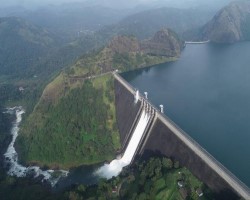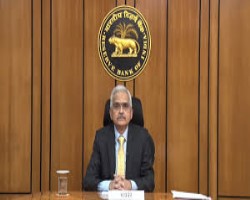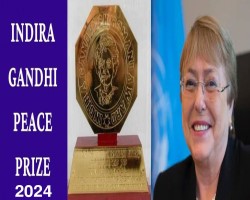SSC Current Affairs
TABLE OF CONTENTS |
| National |
|---|
|
|
|
Why in the news?
The Supreme Court on December 6th fixed in January a detailed hearing of a petition seeking to bring down the permissible water level of the Mullaperiyar dam in Kerala from 142 ft to 120 ft to obviate the possibility of adam breach. About the Mullaperiyar dam: Mullaperiyar dam is situated at the confluence of the Mullayar and Periyar rivers. The dam is located entirely in Kerala. It was built in the late 1800s in the princely state of Travancore (present-day Kerala) and given to British-ruled Madras Presidency on a 999-year lease in 1886. The agreement granted full rights to the Tamil Nadu to construct irrigation projects on the land. The dam was built to divert eastwards a part of the west-flowing Periyar river, to feed the arid areas of Tamil Nadu. The dam stands at the height of 53.66 metres and 365.85 metres in length. The dam is owned, operated and maintained by Tamil Nadu. Tamil Nadu maintained it for several purposes, including irrigation, drinking water supply and hydro-power generation. Situation after Independence: After the independence, the Kerala government said that the earlier agreement signed between British Raj and Travancore was invalid and needed to be renewed. As a result, the agreement was renewed in the 1970s. Tamil Nadu was given rights to the land and the water from the dam as well as the authority to develop hydro-power projects at the site. Kerala received rent in return. Origin of the Mullaperiyar Dam Dispute: Safety concerns surfaced in 1979 after it was reported in the Kerala that a minor earthquake had caused cracks in the dam. The Central Water Commission was asked to examine the structure and suggest ways to strengthen it. As an emergency measure, the commission recommended that the level of water stored in the reservoir be lowered to 136 feet from about 142 feet. It held that the water level could be raised to the dam’s full capacity of 152 feet after the structure was strengthened. This caused two divergent perspectives leading to the emergence of dispute between these two states: Tamil Nadu claims that though it has undertaken periodic repairs on the dam, the Kerala government has not allowed it to raise the water level. Kerala, on the other hand, contends it is not safe to raise the water level as Idukki district, where the dam is located, is earthquake-prone. Supreme Court Judgement on Mullaperiyar Dam Conflict: In 2006, the Supreme Court allowed the Tamil Nadu government to raise the water level to 142 feet, contending that the apprehensions raised by Kerala were baseless. The Kerala government countered this with an amendment to the 2003 Kerala Irrigation and Water Conservation Act. The amendment classified the Mullaperiyar dam as endangered and restricted the level of water in it to 136 feet. This amendment was declared unconstitutional by the SC in 2014. In 2014, SC said that Kerala could not obstruct Tamil Nadu from raising the water level to 142 feet. To allay Kerala’s concerns, it directed that a three-member supervisory committee be set up to: oversee the process of raising the water level, inspect the dam routinely, and look into the safety concerns. What is the Dispute? In late 1979, after the eruption of the controversy over the structural stability of the dam, it was decided at a tripartite meeting chaired by K. C. Thomas, the then Chairman of the Central Water Commission that the water level be lowered to 136 feet against the full reservoir level of 152 feet so that Tamil Nadu could take up strengthening measures. In 2006 and 2014 the Supreme Court held that the water level be raised to 142 feet, up to which Tamil Nadu stored water even 2021. The court’s judgment of 2014 also provided for the formation of the supervisory committee and the completion of the remaining work by Tamil Nadu. But, there has been no end to litigation over the dam with Kerala witnessing landslides in recent years. Though there had been no reports of landslides in the vicinity of the dam site, the events in other parts of the State led to a renewed campaign against the dam. The Kerala government proposed that the existing dam be decommissioned and a fresh one be built These options are not completely acceptable to Tamil Nadu which wants to complete the remaining strengthening work and restore the level to 152 feet. Why is the Dam Safety Act? About: The Dam Safety Act, 2021 came into force in December 2021. The act is aimed at addressing the long-felt need for addressing issues concerning the safety of major dams all over the country. It provides for surveillance, inspection, operation, and maintenance of certain dams for prevention of disasters related to dam failure, apart from institutional mechanisms to ensure their safe functioning. The Act covers those dams having a height of over 15m and between 10m and 15m with certain stipulations. Create two National Institutions: National Committee on Dam Safety (NCDS): It seeks to evolve dam safety policies and recommend necessary regulations, and the National Dam Safety Authority (NDSA): It seeks to implement policies and address unresolved issues between the two States. The NDSA will be the regulatory body. Create two State Level Institutions: The legislation also envisages the formation of State Dam Safety Organisations and State Committees on Dam Safety. Dam owners will be held responsible for the construction, operation, maintenance, and supervision of dams. How does the Dam Safety Act Affect Mullaperiyar? Since the act provides that the NDSA will perform the role of the State Dam Safety Organisation for a dam located in one State and used by another, the Mullaperiyar dam, strictly speaking, comes under the purview of the NDSA. Besides, the Supreme Court, which has been hearing petition after petition after its judgment in 2014, mooted the idea of extending the powers of its supervisory committee to take over charge of the safety and maintenance of the structure. What are the Key Highlights about Periyar River? The Periyar River is the longest river in the state of Kerala with a length of 244 km. It is also known as ‘Lifeline of Kerala’ as it is one of the few perennial rivers in the state. Periyar River originates from Sivagiri hills of Western Ghats, in Tamil Nadu and flows through the Periyar National Park. The main tributaries of Periyar are Muthirapuzha, Mullayar, Cheruthoni, Perinjankutti. |
| Economy |
|
|
|
Why in the news?
The Monetary Policy Committee, headed by RBI Governor Shaktikanta Das, announced the bi-monthly monetary policy for FY25. The RBI has kept the repo rate unchanged at 6.5 percent amid high inflation and a slump in GDP. Das said the rate has been kept unchanged to continue with the policy’s neutral stance and monitor the outlook on inflation and growth. Key Takeaways: 1. Under Section 45ZB of the amended RBI Act, 1934, the central government is empowered to constitute a six-member Monetary Policy Committee (MPC) to determine the policy interest rate required to achieve the inflation target. The first such MPC was constituted on September 29, 2016. 2. Section 45ZB lays down that “the Monetary Policy Committee shall determine the Policy Rate required to achieve the inflation target”, and that “the decision of the Monetary Policy Committee shall be binding on the Bank”. 3. Section 45ZB says the MPC shall consist of the RBI Governor as its ex officio chairperson, the Deputy Governor in charge of monetary policy, an officer of the Bank to be nominated by the Central Board and three persons to be appointed by the central government. The last category of appointments must be from “persons of ability, integrity, and standing, having knowledge and experience in the field of economics or banking or finance or monetary policy”. (Section 45ZC) 4. In May 2016, the RBI Act was amended to provide a legislative mandate to the central bank to operate the country’s monetary policy framework. The framework, according to the Reserve Bank of India website, “aims at setting the policy (repo) rate based on an assessment of the current and evolving macroeconomic situation; and modulation of liquidity conditions to anchor money market rates at or around the repo rate.” 5. The MPC fixes the benchmark interest rate — or the base or reference rate that is used to set other interest rates — in India. The primary objective of the RBI’s monetary policy is to maintain price stability while keeping in mind the objective of growth. Price stability is a necessary precondition to sustainable growth. Instruments of Monetary Policy: The RBI uses several direct and indirect instruments to maintain price stability while keeping the objective of growth. The instruments are Cash Reserve ratio (CRR), Repo rate, reverse repo rate, Statutory Liquidity Ratio (SLR), Standing Deposit Facility (SDF) Rate, Bank rate, and Liquidity Adjustment Facility (LAF). 📍The CRR is the percentage of a bank’s total deposits that is required to maintain in liquid cash with the RBI as a reserve. The CRR percentage is determined by the RBI from time to time. Today (6th December) RBI slashed the cash reserve ratio (CRR) by 50 basis points (bps) to 4 per cent from 4.5 per cent in a bid to boost liquidity in the financial system. The decision to cut CRR by 50 bps will free up Rs 1.16 lakh crore to the banking system, augmenting the lendable resources of banks. 📍The interest rate that the RBI charges when commercial banks borrow money from it is called the repo rate. It is used by the banks to meet their short-term funding needs. RBI has kept the Repo rate unchanged at 6.5% in a majority 4-2 decision. With the RBI leaving the Repo rate steady at 6.5%, all external benchmark lending rates (EBLR) linked to the Repo rate will not increase, giving relief to borrowers as their equated monthly instalments (EMIs) will not increase. 📍 The interest rate that the RBI pays commercial banks when they park their excess cash with the central bank is called the reverse repo rate. Since RBI is also a bank and has to earn more than it pays, the repo rate is higher than the reverse repo rate. The current Reverse Repo Rate as per the RBI is 3.35%. 📍Statutory Liquidity Ratio (SLR) is the minimum percentage of deposits that commercial banks have to mandatorily maintain in the form of liquid cash government and state government securities. The current SLR in India is 18%. About is Monetary Policy Committee (MPC): The MPC was setup after a Memorandum of Understanding between the government and the RBI about the conduct of the new inflation-targeting monetary policy framework. The Reserve Bank of India Act, 1934 (RBI Act) has been amended by the Finance Act, 2016 to provide for a statutory and institutionalized framework for an MPC. Under Section 45ZB of the amended RBI Act, 1934, the central government is empowered to constitute a six-member MPC. Function: The MPC is entrusted with the task of fixing the benchmark policy rate (repo rate) required to contain inflation within the specified target level. The MPC replaced the previous arrangement of Technical Advisory Committee. Composition: MPC will have six members: the RBI Governor (Chairperson), the RBI Deputy Governor in charge of monetary policy, one official nominated by the RBI Board, and the remaining three members would represent the Government of India. The external members hold office for a period of four years. The quorum for a meeting shall be four Members, at least one of whom shall be the Governor and, in his absence, the Deputy Governor, who is the Member of the MPC. The MPC takes decisions based on a majority vote. In case of a tie, the RBI governor will have the second or casting vote. The decision of the MPC would be binding on the RBI. RBI’s Monetary Policy Department (MPD) assists the MPC in formulating the monetary policy. |
|
|
|
Useful information for all competitive exams:
Reserve Bank of India: Headquarters: Mumbai, Maharashtra Established: 1 April 1935 Governor (25th): Shaktikanta Das, IAS (retd.) Deputy Governors: M. Rajeshwar Rao, Swaminathan J, T. Rabi Sankar, Dr. M.D. Patra |
|
|
|
In Short:
The Monetary Policy Committee, headed by RBI Governor Shaktikanta Das, announced the bi-monthly monetary policy for FY25. The RBI has kept the repo rate unchanged at 6.5 percent amid high inflation and a slump in GDP. Today (6th December) RBI slashed the cash reserve ratio (CRR) by 50 basis points (bps) to 4 per cent from 4.5 per cent in a bid to boost liquidity in the financial system. |
| Awards |
|
|
|
Why in the news?
India has bagged the International Social Security Association’s Good Practice Award for Asia and Pacific for this year for five services provided by the Employees’ Provident Fund Organisation (EPFO). Key Takeaways: India has been honored with the International Social Security Association (ISSA) Good Practice Award for Asia and Pacific 2024, presented by Dr. Mohammed Azman, President of ISSA, at the Regional Social Security Forum in Riyadh, Saudi Arabia. ISSA: The International Social Security Association promotes social security worldwide. It facilitates collaboration among social security institutions. ISSA aims to enhance social security systems globally through best practices. EPFO: The Employees’ Provident Fund Organization manages provident funds for Indian workers. It ensures financial security post-retirement. EPFO also provides various services to support members throughout their employment. Nidhi Aapke Nikat 2.0: This initiative brings EPFO services to remote areas. It operates monthly to resolve grievances on-site. The programme enhances accessibility and convenience for members and pensioners. Digital Life Certificate: The Digital Life Certificate allows pensioners to authenticate their identity online. It uses Aadhaar-based biometric verification. This innovation streamlines the process for submitting life certificates. Employees’ Provident Fund Organization (EPFO) received five Certificates of Merit for Communication channels, E-proceedings: A case on use of information and communication technology in justice delivery, Massive district outreach programme (Nidhi Aapke Nikat), Multilingual call centres and Prayaas initiative. The awards were received by Mr. Ashok Kumar Singh, DG, ESIC on behalf of EPFO. The five award categories and brief description about each is as follows - Communication Channels: - Reaching stakeholders through different Media: EPFO has adopted the ISSA Guidelines on Communication by Social Security Administrations and implemented it by preparing communication framework document (CFD) to effectively and efficiently communicate with stakeholders. Digital and non-digital communication strategy is being adopted for efficient and timely communication. Webinars, short message services (SMS) and e-mails, social media, information education communication (IEC) videos, camps under Nidhi Aapke Nikat 2.0 (a massive district outreach programme, etc, are used to educate and communicate with stakeholders. E-proceedings: A case on use of information and communication technology in justice delivery: Ensuring regular compliance is a critical aspect of a contributory social security system. In this process, the regulators conduct judicial proceedings to determine the dues from the defaulting employers. The inquiries were done in a physical mode leading to time delays and there were concerns regarding higher levels of transparency. It has made the inquiry process online end-to-end, ensuring fairness, and enhanced transparency, in addition to reducing the average inquiry time. Nidhi Aapke Nikat 2.0 :- Ensuring last mile delivery of Services: EPFO has presence in the country through 139 Regional Offices and 117 District Offices. However, there is absence of EPFO in more than 500 districts of the country, leading members to sometimes undertake extensive journeys to EPFO offices for various tasks such as online claim submission, grievance redressal, etc. In an effort to enhance convenience for members, pensioners and employers, and bring services closer to their residences the Nidhi Aapke Nikat programme was started. Nidhi Aapke Nikat 2.0 is held throughout the country on 27th of every month, where grievances are resolved on the spot. This has also promoted the Government’s policy of ease of doing business and ease of living. Multilingual Call Centres: - Effort towards an inclusive grievance redressal: Vast geographical expansion and a multitude of languages spoken across India present challenges in disseminating information about social security schemes under the Employees’ Provident Fund and Miscellaneous Provisions Act 1952.To address the challenge, EPFO has made the information accessible and free of charge in 12 major regional languages, in alignment with the ISSA Guidelines on Service Quality. These call centres help in efficient grievance redressal and ensuring member satisfaction by resolving doubts and problems in the language of the member. Prayaas – Prioritizing Pensioners: It is an initiative undertaken by EPFO for handing over pension payment orders (PPO) to retiring members of the Employees’ Pension Scheme, 1995 on the day of retirement itself. Numbers of the PPO issued under this initiative is rising consistently. EPFO also received a Special Mention for Digital Life Certificate (Jeevan Pramaan Patra), highlighting the commitment of EPFO to support pensioners with digital ease. The Digital Life Certificate also known as the Jeevan Pramaan Certificate is an additional facility for filing Life Certificates for pensioners enabled by the biometric authentication system that is Aadhaar-based. These awards recognize the efforts undertaken by EPFO to reform and adopt good practices in line with changing economic and social milieu. This international recognition will further inspire team EPFO to strive harder for the service of its members. |
|
|
|
Why in the news?
Former President of Chile Veronica Michelle Bachelet Jeria was awarded the Indira Gandhi Prize for Peace, Disarmament and Development 2024 for her advocacy for gender equality and the rights of vulnerable populations. Key Takeaways: The award was announced by the international jury of the Indira Gandhi Memorial Trust, chaired by former Foreign Secretary and National Security Advisor Shivshankar Menon. “The Indira Gandhi Prize for Peace, Disarmament, and Development for 2024 is awarded to Her Excellency Michelle Bachelet for being an exemplary and inspirational figure to women and men around the world. She has steadfastly strived for peace, gender equality, human rights, democracy, and development under various circumstances, significantly contributing to India’s relations with Chile,”. Michelle Bachelet is a founding member of UN Women and served as the UN High Commissioner for Human Rights. She has consistently advocated for gender equality and the rights of the most vulnerable populations globally. Bachelet faced incarceration during the military dictatorship of Augusto Pinochet, and after her release, she went into exile. She later returned to Chile and became the country’s first female president, serving from 2006 to 2010 and again from 2014 to 2018. During her presidency, Bachelet implemented significant education and tax reforms. It was also during her time in office that India and Chile signed a free trade agreement. Bachelet became the inaugural Director of UN Women and served as UN High Commissioner for Human Rights from 2018 to 2022. What is the Indira Gandhi Prize for Peace, Disarmament and Development? About: The Indira Gandhi Prize for Peace, Disarmament, and Development award has been conferred every year since 1986 by Indira Gandhi Memorial Trust in honor of Indira Gandhi, the former Prime Minister of India. The award recognizes individuals or organizations for their exceptional contributions to international peace, disarmament, and development. The prize is awarded annually and is considered one of the highest honors in the field of peace and development. It consists of a monetary award of 25 lakh rupees along with a citation. Categories: The award is bestowed in three categories: peace, disarmament, and development. Criteria for Recognition: The recipients are chosen based on their exceptional and sustained efforts to address critical global challenges related to peace, disarmament, and development. Their work should demonstrate a positive impact on the international community and contribute to the betterment of human welfare. In Short: Former President of Chile Veronica Michelle Bachelet Jeria was awarded the Indira Gandhi Prize for Peace, Disarmament and Development 2024. The Indira Gandhi Peace Prize for 2023 has been given to Ali Abu Awwad, a peace activist, and Daniel Barenboim, a classical pianist. The Indira Gandhi Prize for Peace, Disarmament, and Development award has been conferred every year since 1986 by Indira Gandhi Memorial Trust in honor of Indira Gandhi, the former Prime Minister of India. |
| Important Days |
|
|
|
Why in the news?
Since 1949, 7th December is observed as the Armed Forces Flag Day throughout the country to honour the martyrs and the men in uniform who valiantly fought & continue to fight on our borders to safeguard the country's honour. Armed Forces Flag Day 2024: Armed Forces Flag Day 2024 is a tribute to the unwavering dedication and sacrifices of the Indian Armed Forces, encompassing the Army, Navy, and Air Force. Established in 1949, this day provides an opportunity for citizens to honor the courage and service of our military personnel and express solidarity with their families. It also serves as a platform to raise funds to support: Rehabilitation of battle casualties. Welfare of ex-servicemen and their families. Education for the children of armed forces personnel. Armed Forces Flag Day reinforces the nation's gratitude and commitment to those who safeguard its sovereignty and security. Key Takeaways: On this day, the nation pays tribute to martyrs in the Indian Army, Navy, Air Force, and other defence forces who lost their precious lives while serving the country. On this day, people buy flags and items, supporting the Armed Forces Flag Day Fund (AFFDF). The funds aid families of armed forces personnel, honouring those who sacrificed for the nation, and the ex-servicemen. |
|
|
|
Useful information for all competitive exams:
Indian Army: Headquarters: Integrated Defence Headquarters, Ministry of Defence, New Delhi Chief of the Army Staff (COAS)(30th): General Upendra Dwivedi Defence Minister of India: Rajnath Singh Commander-in-Chief: President Draupadi Murmu Army Day is celebrated on 15 January every year in India, in recognition of Field Marshal Kodandera M. Cariappa's taking over as the first Commander-in-Chief of the Indian Army from General Francis Roy Bucher, the last British Commander-in-Chief of India, on 15 January 1949. Indian Navy: Founded: 26 January 1950 Headquarters: Integrated Defence Headquarters, Ministry of Defence, New Delhi Navy Day: 4 December Chief of the Naval Staff (CNS)(26th): Admiral Dinesh K Tripathi Indian Air Force: Founded: 26 January 1950 Headquarters: Integrated Defence Headquarters, Ministry of Defence, New Delhi Air Force Day: 8 October Commander-in-Chief: India President Droupadi Murmu Chief of the Air Staff (CAS)(28th): Air Chief Marshal Amar Preet Singh Chief of Defence Staff (India): Type: Chief of defence Status: Overall professional head of the Indian Armed Forces. Appointer: Appointments Committee of the Cabinet President of India Term length: No fixed duration, only from appointment till the age of 65. Formation: 1 January 2020 First holder: General Bipin Rawat Salary: ₹250,000 (US$3,000) monthly Current Chief of Defence Staff (2nd): General Anil Chauhan In Short: Since 1949, 7th December is observed as the Armed Forces Flag Day throughout the country to honour the martyrs and the men in uniform who valiantly fought & continue to fight on our borders to safeguard the country's honour. The Indian Armed Forces, encompassing the Army, Navy, and Air Force. On this day, people buy flags and items, supporting the Armed Forces Flag Day Fund (AFFDF). |
|
|
|
Frequently Asked Questions (FAQs):
Q1. When did Armed Forces Flag Day has been observed annually in India? Ans: 7th December Q2. Why do we celebrate Flag Day in India? Ans: Flag Day in India is celebrated to honor the sacrifices made by the armed forces and to raise funds for the welfare of their families, veterans, and martyrs. Q3. What is the motto of Flag Day? Ans: The motto of Flag Day is to express gratitude, unity, and support for the Indian Armed Forces and their families through active participation and contributions. |
|
|
|
Why in the news?
India co-sponsored a UN resolution declaring December 21 as World Meditation Day. Aim: It is aimed at comprehensive human well-being, including mental, emotional, physical and spiritual dimensions. It prepares human beings to cope with several modern-day issues such as heightened anxiety and stress and brings about harmony between mind and body, humans and nature. Key Takeaways: India, including Liechtenstein, Sri Lanka, Nepal, Mexico and Andorra, was a member of the core group of countries that guided the unanimous adoption of the resolution titled ‘World Meditation Day’ in the 193-member UN General Assembly. India’s Permanent Representative to the UN Ambassador Parvathaneni Harish. December 21 marks the Winter Solstice, which in Indian tradition is the beginning of “Uttarayana – an auspicious time of the year, especially for inner reflection” and meditation. It also falls exactly six months after the International Day of Yoga commemorated on June 21, which is the Summer Solstice. |
|
|
|
IN SHORT:
UNGA Declares December 21 as World Meditation Day December 21 marks the Winter Solstice It also falls exactly six months after the International Day of Yoga commemorated on June 21, which is the Summer Solstice. |
|
|
|
Frequently Asked Questions (FAQs):
Q1. UNGA Declares which date as World Meditation Day? Ans: December 21 Q2. International Day of Yoga observed every year on? Ans: June 21 |
Current-Affairs Video : 7-Dec-24 |
|
|
|
<< 6-Dec-24
|
|
|





